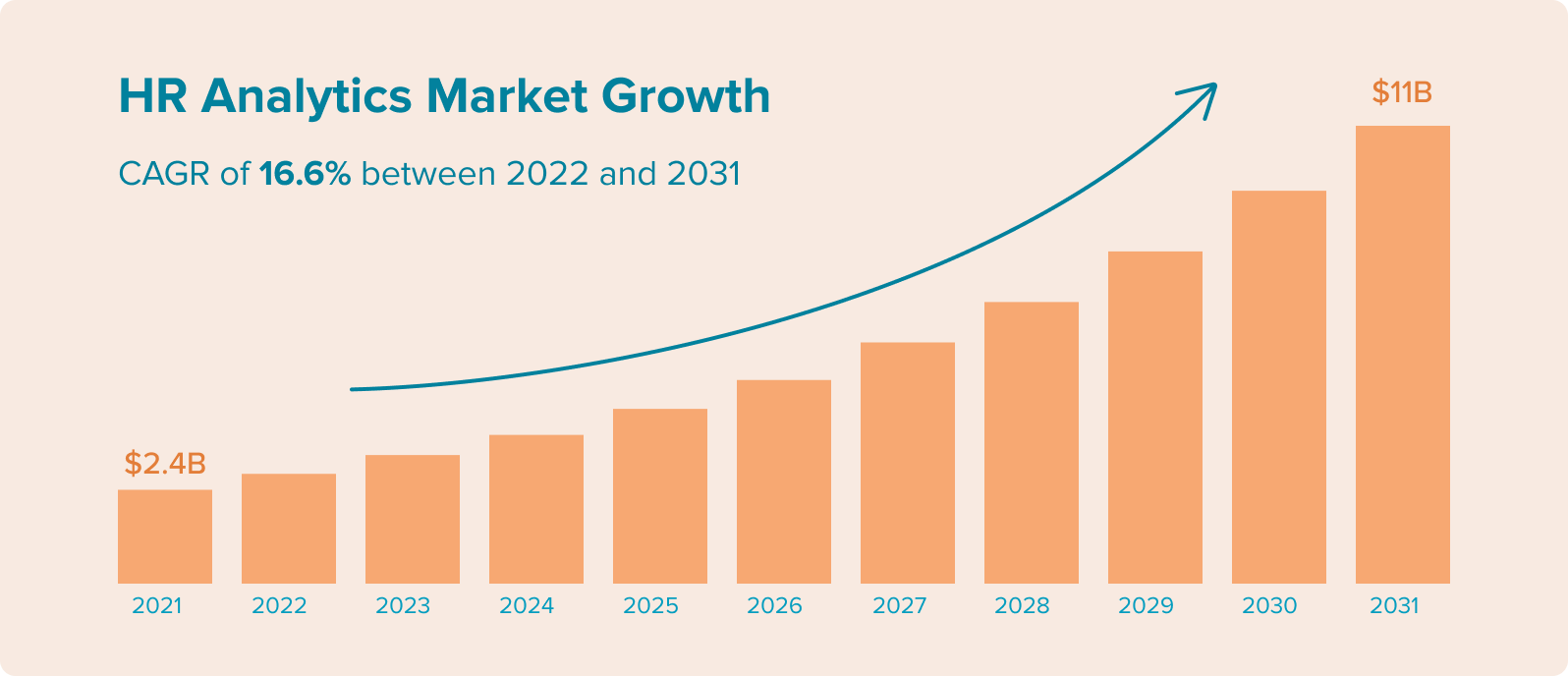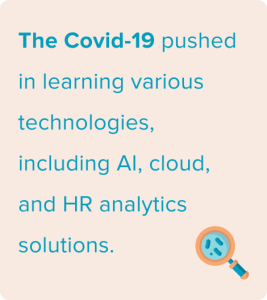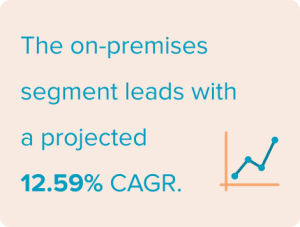In 2021, the global HR analytics market boasted a valuation of $2.4 billion, with expectations of reaching $11 billion by 2031, marking a notable CAGR of 16.6% between 2022 and 2031.

The HR analytics market encountered a positive growth trajectory, particularly during the COVID-19 pandemic. This period saw a surge in demand for HR analytics, primarily in sectors such as BFSI and manufacturing, as it played a pivotal role in workforce management during the pandemic.
HR analytics revolves around the collection, analysis, and reporting of HR data. It empowers organizations to assess how a spectrum of HR metrics impacts overall business performance, fostering data-driven decision-making in human resources management.
The utilization of HR analytics relies on business analytics and data mining solutions, which scrutinize data stemming from various HR activities encompassing employee recruitment, training, attendance, engagement, performance management, and compensation. By delving into HR analytics, organizations can enhance the efficiency of HR operations by employing collected data to predict essential attributes like performance, retention, and recruitment.
While the global HR analytics market is expected to flourish in the forecast period due to these factors, it may also face challenges related to a shortage of skilled workforce resources.
Assessing the Influence of COVID-19
 As we look forward to 2031, the projected estimates surpass those from the pre-COVID-19 era. The global COVID-19 pandemic has left a profound mark on businesses worldwide. Interestingly, it has ushered in a positive impact on the adoption of HR analytics solutions, mainly because of the lockdown measures enforced by governments across various nations.
As we look forward to 2031, the projected estimates surpass those from the pre-COVID-19 era. The global COVID-19 pandemic has left a profound mark on businesses worldwide. Interestingly, it has ushered in a positive impact on the adoption of HR analytics solutions, mainly because of the lockdown measures enforced by governments across various nations.
Throughout the COVID-19 period, companies have been actively exploring cutting-edge technologies, including AI-powered solutions, automation, cloud-based technologies, and application-driven HR analytics solutions. This heightened interest spans multiple industries, encompassing sectors like BFSI, healthcare, IT, telecom, and more, as they have shifted their focus toward contactless operational strategies.
Segmental Analysis
The global people analytics market undergoes segmentation across various key parameters, including components, deployment options, organization size, and end-users.
Components. Software and Services
Within the global market, a fundamental division exists in terms of components. It comprises software and services, where the software segment holds the lion’s share. This segment is poised for a noteworthy growth rate, with an expected CAGR of 12.63% during the forecast period, according to Straits Research. HR practitioners benefit from people analytics software, using it to gather and scrutinize data, uncovering significant human resource metrics. These advanced tools amalgamate business data with HR insights, providing insights into the HR department’s influence on overall business performance. Moreover, these software solutions harness the power of artificial intelligence and cloud computing, allowing the identification of trends within HR data and even external sources like social media.
Deployment. On-Premises and Cloud-Based
 The deployment aspect of the global market splits into two categories: on-premises and cloud-based deployments. The on-premises segment dominates market contribution and is expected to maintain a CAGR of 12.59% over the forecast period. On-premises deployment necessitates the installation of people analytics software directly onto local computers or servers. While on-premises solutions currently hold a significant share of the global market, cloud-based deployments are rapidly gaining ground due to their accessibility through web interfaces. Many end-users acknowledge the importance of time, signaling a gradual shift from on-premises solutions to cloud-based alternatives. However, transitioning away from on-premises infrastructure requires substantial effort, which is still underway for many. The complex nature of on-premises solutions, often tailored to specific requirements, can lead to increased expenses when scaling or adding storage capacity. This, coupled with the costs of hardware upgrades and migrations, sometimes leads to system downtime, disrupting business continuity. These challenges present constraints to the growth of on-premise people analytics software deployment.
The deployment aspect of the global market splits into two categories: on-premises and cloud-based deployments. The on-premises segment dominates market contribution and is expected to maintain a CAGR of 12.59% over the forecast period. On-premises deployment necessitates the installation of people analytics software directly onto local computers or servers. While on-premises solutions currently hold a significant share of the global market, cloud-based deployments are rapidly gaining ground due to their accessibility through web interfaces. Many end-users acknowledge the importance of time, signaling a gradual shift from on-premises solutions to cloud-based alternatives. However, transitioning away from on-premises infrastructure requires substantial effort, which is still underway for many. The complex nature of on-premises solutions, often tailored to specific requirements, can lead to increased expenses when scaling or adding storage capacity. This, coupled with the costs of hardware upgrades and migrations, sometimes leads to system downtime, disrupting business continuity. These challenges present constraints to the growth of on-premise people analytics software deployment.
Organization Size. Large Enterprises and Small & Medium Enterprises (SMEs).
Large enterprises take the lead in market share and are expected to exhibit a growth rate of 11.93% during the forecast period. They play a dominant role in the people analytics market, driven by their extensive presence across various countries and the ongoing need to manage a diverse workforce. Their continued growth and expansion contribute significantly to the global market.
End-Users. Telecom and IT, BFSI, Healthcare, Manufacturing, Retail and Consumer Goods, Education, Travel and Hospitality, and Others
Among these, the telecom and IT sector stands out as the primary contributor, with an expected CAGR of 10.25% over the forecast period. The telecom and IT industry’s robust growth, driven by evolving technologies and enhanced connectivity infrastructure, fuels the need for managing an expanding workforce. The HR department within this sector plays a prominent role in employee retention, hiring, engagement, and training. Given the substantial workforce employed in the IT industry, manual management becomes arduous, creating a significant demand for analytics solutions. In essence, the industry’s growth necessitates advanced workforce analytics solutions to streamline HR operations and ensure optimum workforce management.
Regions
In addition to these segmented elements, the global people analytics market is further analyzed based on regional distribution. These regions include North America, Europe, APAC (Asia-Pacific), the Middle East and Africa, and LATAM (Latin America).
By categorizing the market across these key segments, a comprehensive overview of the people analytics market emerges, highlighting its varied dynamics and potential for growth. This segmentation enables a detailed understanding of the market landscape, catering to the diverse needs and requirements of businesses and industries across the globe.


